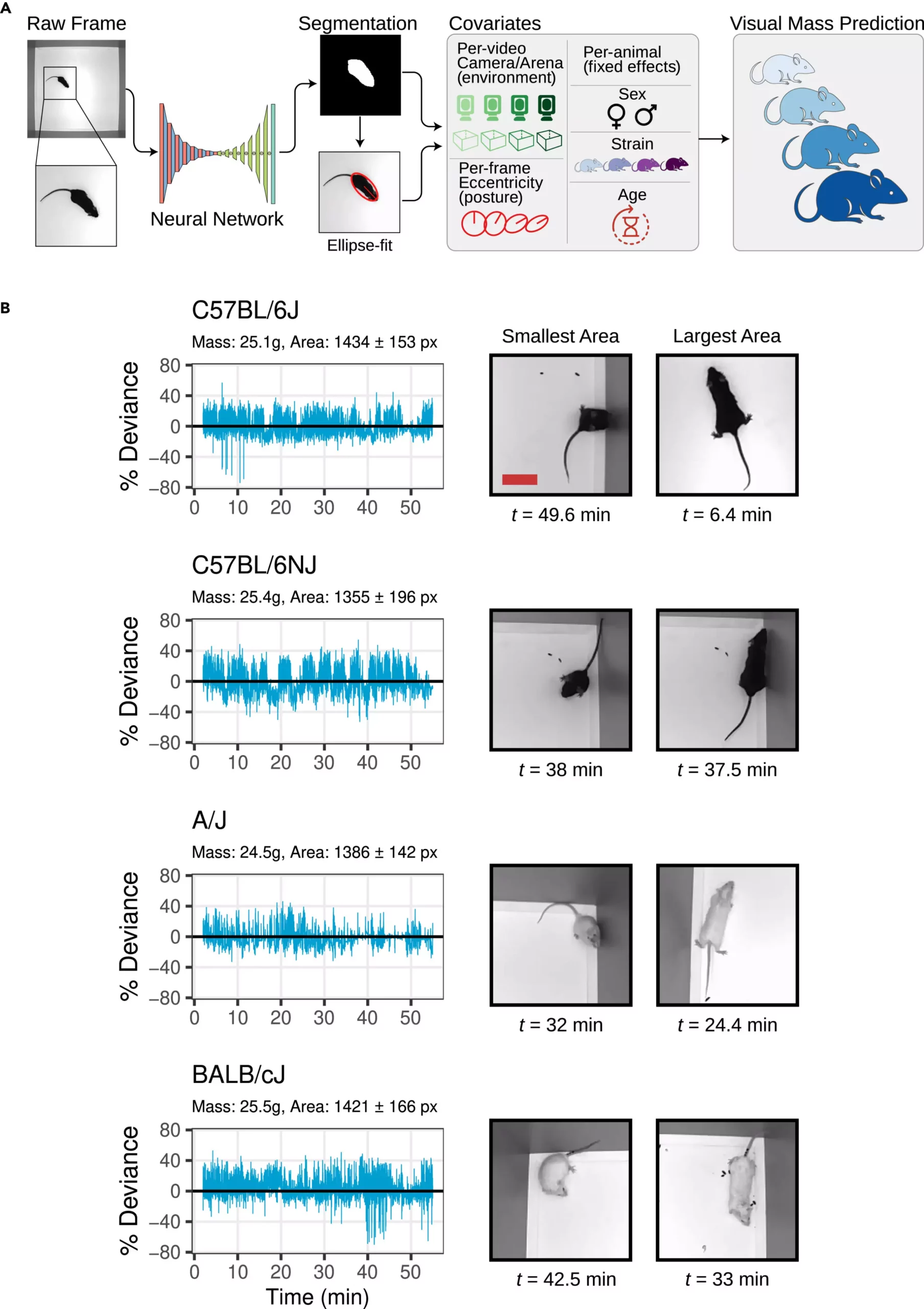Research is constantly advancing in the field of biomedical studies, demanding more accurate and non-invasive methods for measuring critical metrics such as body mass. The traditional approach of weighing mice, the most common subjects in preclinical studies, has proven to be stressful and unreliable, hindering the validity of experimental results.
A research team led by Jackson Laboratory Associate Professor Vivek Kumar, Ph.D., has developed an innovative method using computer vision technology to continuously and accurately measure mouse body mass without the need for traditional weighing techniques. This breakthrough aims to reduce stress in mice and improve the quality and reproducibility of biomedical research.
The development of this non-intrusive method posed several challenges for the research team. Unlike static subjects in industrial farming, mice are highly active and flexible, constantly changing posture and shape. Additionally, working with 62 different mouse strains with unique sizes and behaviors required the use of advanced computer vision methods, machine learning tools, and statistical modeling to achieve the desired level of accuracy.
The new method offers significant advantages for researchers working with mice in preclinical studies. It enables the detection of small but crucial changes in body mass over multiple days, which is essential for experiments involving drug or genetic manipulations. Moreover, this method has the potential to serve as a diagnostic tool for monitoring general health in mice and can be adapted for use in different experimental settings and with other organisms in the future.
The development of a non-intrusive method for measuring mouse body mass using computer vision technology represents a significant advancement in biomedical research. By reducing stress on the animals and improving the accuracy and reproducibility of data, this innovative approach promises to enhance the quality of preclinical studies and facilitate genetic and pharmacological experiments. Researchers can now look forward to a more efficient and reliable method for monitoring mouse body mass, paving the way for increased precision in biomedical research.


Leave a Reply